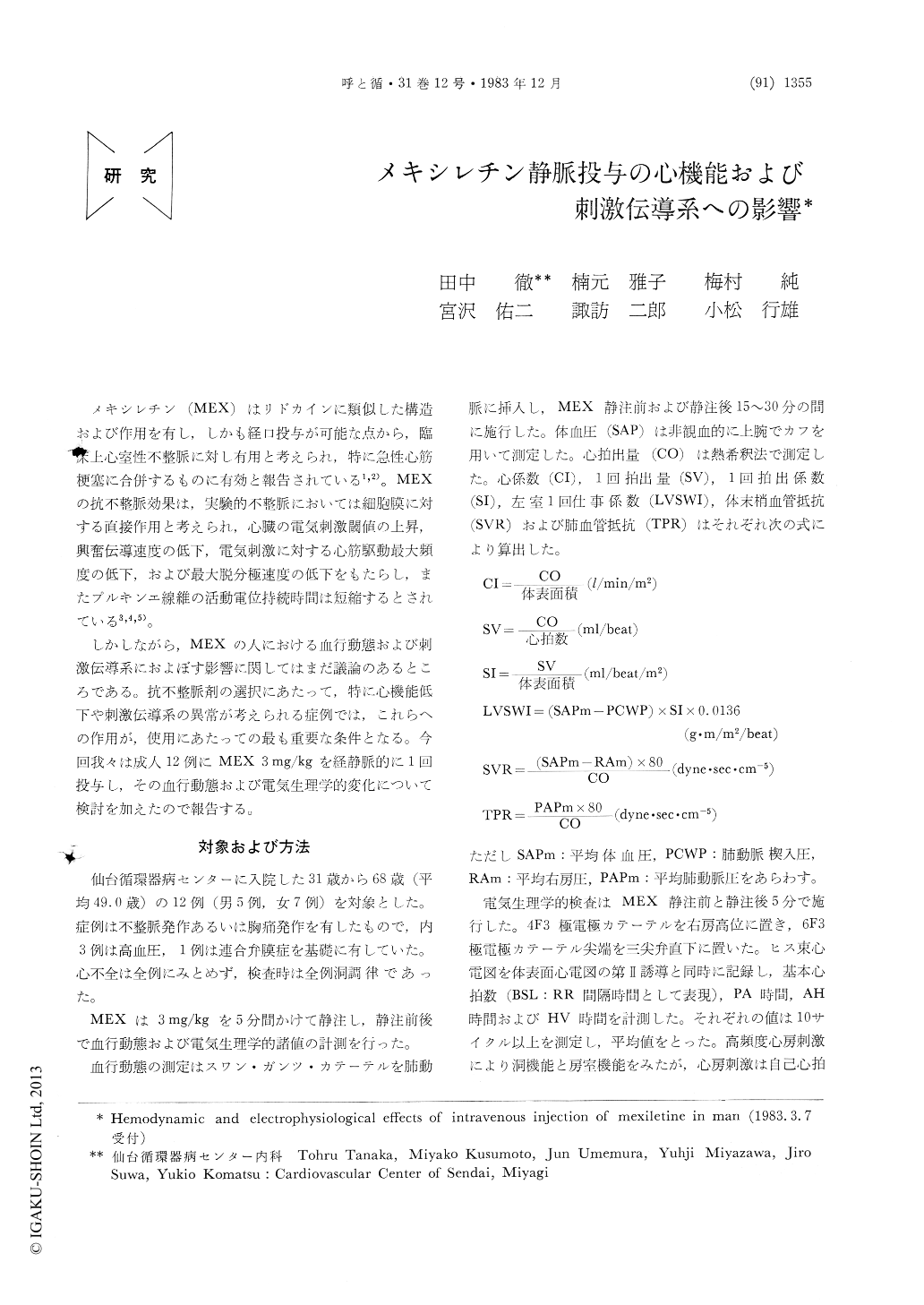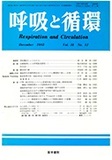Japanese
English
- 有料閲覧
- Abstract 文献概要
- 1ページ目 Look Inside
メキシレチン(MEX)はリドカインに類似した構造および作用を有し,しかも経口投与が可能な点から,臨床上心室性不整脈に対し有用と考えられ,特に急性心筋梗塞に合併するものに有効と報告されている1,2)。MEXの抗不整脈効果は,実験的不整脈においては細胞膜に対する直接作用と考えられ,心臓の電気刺激閾値の上昇,興奮伝導速度の低下,電気刺激に対する心筋駆動最大頻度の低下,および最大脱分極速度の低下をもたらし,またプルキンエ線維の活動電位持続時間は短縮するとされている3,4,5)。
しかしながら,MEXの人における血行動態および刺激伝導系におよぼす影響に関してはまだ議論のあるところである。抗不整脈剤の選択にあたって,特に心機能低下や刺激伝導系の異常が考えられる症例では,これらへの作用が,使用にあたっての最も重要な条件となる。今回我々は成人12例にMEX 3mg/kgを経静脈的に1回投与し,その血行動態および電気生理学的変化について検討を加えたので報告する。
The hemodynamic and electrophysiological effects of the intravenous administration (3.0 mg/ kg) of mexiletine were studied in twelve patients. Cardiac output was significantly reduced from a mean control value of 5.9±2.0 to 5.1±1.4 1/min (p<0.01). Total pulmonary resistance were signifi-cantly increased by 11%. Mexiletine had no consistant effect on heart rate, systemic arterial blood pressure, pulmonary arterial pressure, pulmonary capillary wedge pressure and systemic vascular resistance.
Significantly AH interval was increased by 8%, and maximum sinus node recovery time was reduced by 16%. The effective and functional refractory periods of the AV node and His-Purkinje system were significantly reduced. No significant changes ocurred in HV interval, sinoatrial conduction time, AV conduction and refractory period of atrium.
Mexiletine had negative inotropic effects, however, no adverse effects on sinus node function, AV conduction and His-Purkinje system.

Copyright © 1983, Igaku-Shoin Ltd. All rights reserved.


